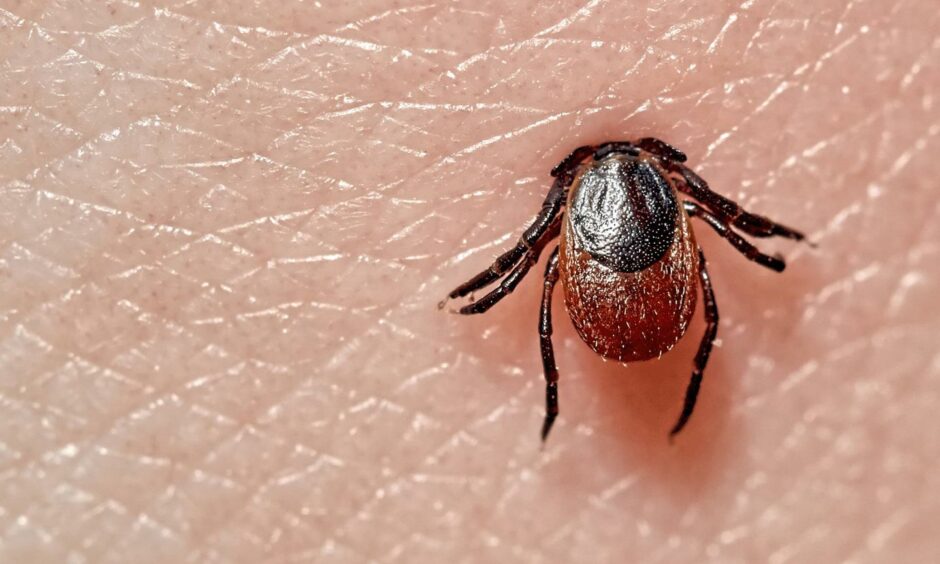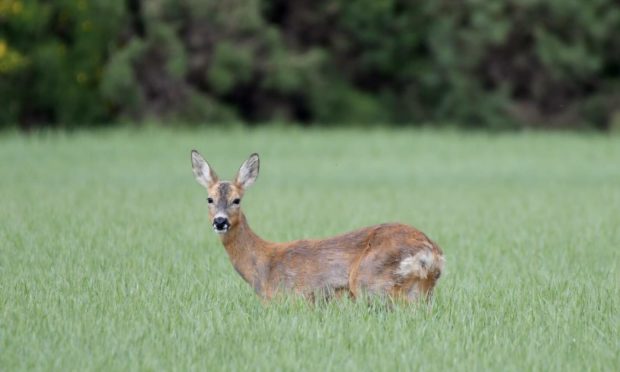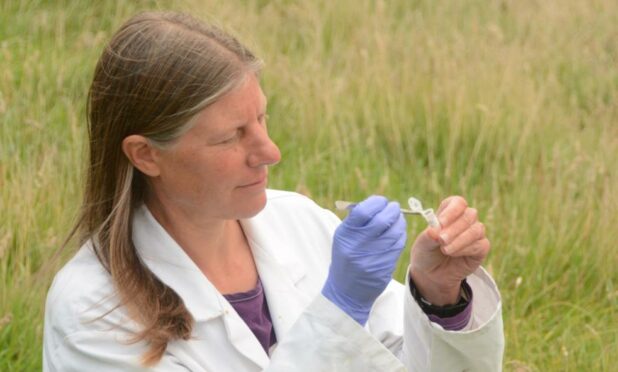Ticks. They suck your blood and if you’re unlucky they can make you seriously ill. But it appears we’re going to have to learn to live with more of them.
As our winters become warmer and wetter, the spider-like parasites are thriving.
Only a small percentage – between 2% and 5% – carry the bacteria that can cause potentially debilitating Lyme disease.
But one female tick is capable of laying thousands of eggs and our warming climate is giving them a better chance of survival.
Are deer to blame?
There is a consensus that where there are more deer, there are more ticks.
However, more ticks do not always mean a corresponding rise in ticks infected with Lyme disease.
Scientists are still trying to work out the relationship between ticks and Lyme infection caused by Borrelia burgdorferi bacteria.
The British Deer Society (BDS) says current research suggests deer may only play a “very small part” in the spread of Lyme disease.
John Bruce from the BDS has worked in the countryside for decades.
He says he has witnessed a “massive increase” in the number of ticks in some areas.
Working as a deer stalker, he has on occasions had to remove in the region of 30 ticks from himself.
This is not unusual, he says. Ticks are an occupational hazard for anyone working outdoors.
Ticks have ‘enjoyed’ climate change
Mr Bruce does not believe a deer cull will eradicate ticks. But it could reduce numbers.
“Ticks are an insect, and ticks are an insect that have enjoyed global warming.
“There’s no doubt about it.
“Since the early seventies, which I have witnessed, there has been a massive increase in ticks in places.
“Each tick needs only one host. Hosts can take on board thousands of ticks.
“It just takes one deer, or one sheep or one hare or one cow, to sustain ticks.
“Ticks will use any available host. But a reduction in deer does seem to reduce the number of ticks in the population.”
Feeling itchy yet? Read about the tick’s life cycle

Once hatched, ticks go through a larval stage.
The larvae must feed to survive. Unable to move far, the miniscule freeloaders tend to crawl on to small rodents or birds.
At this stage they can pick up infection before growing into nymph ticks.
Nymphs, which are about the size of a pinhead, are thought to be responsible for most Lyme disease infections in humans.
Lurking on blades of grass and ferns, they are perfectly poised to attach themselves to unsuspecting exposed ankles and small children.
Once they have adequately feasted on the blood of their chosen host, they drop off, digest, moult and grow into adults.
Adults crawl on to any large mammal that passes, be it a deer, sheep or human.
If the tick has been infected at any earlier stage it could pass that infection on to its new host.
Deer don’t get Lyme disease
Dr Lucy Gilbert is a senior research fellow at Glasgow University.
She has been investigating the relationship between ticks and Lyme disease.
“There is repeated scientific evidence that deer are the main carriers of ticks in Scotland,” said Dr Gilbert.
However she said the relationship between deer and Lyme disease was “much more complex and difficult to predict”.
Deer may host ticks but they do not actually carry the bacteria that causes Lyme disease.
They have immunity to the bacteria. Ticks cannot become infected by biting a deer.
In fact, the animals carrying the disease include mice, rats, squirrels and garden birds.
Dr Gilbert said the important figure is not the number of ticks, but the density of infected ticks in a population.
That said, more ticks will still mean more infected ticks.
Dr Gilbert said: “So even in the cases where deer may slightly decrease the percentage of infected ticks, we know that deer create a lot of ticks in the environment, and this effect could potentially result in more infected ticks in total.”










